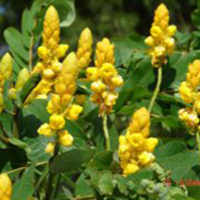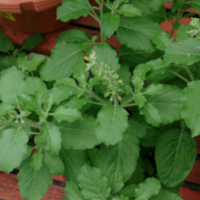Natural Remedies
Calcium Sennosides | A Powerful Natural Laxative
Sennosides are hydroxyanthracene glycosides derived from Senna leaves. They have been used as natural, safe time-tested laxatives in traditional as well as modern systems of medicine. Senna is native to tropical Africa but now cultivated extensively in South of India. It is grown from seeds. The leaves are picked before or while plant is in flowering stage and pods are collected when they are ripe.
Summary:
Calcium sennosides has been used as a natural, safe time-tested laxatives in traditional as well as modern systems of medicine. Calcium sennosides is recognized for its laxative properties. A daily dose of sennoside B from 20 to 30 mg is recommended for this purpose
Botany Cassia acutifolia is native to Egypt and the Sudan while Cassia angustifolia is native to Somalia and Arabia. Plants known as “wild sennas” ( C. hebecarpa Fern. and C. marilandica L.) grow on moist banks and woods in the eastern US. This plant should not be confused with “cassia,” a common name for cinnamon. Senna is a low branching shrub, growing to about 3 feet in height. It has a straight woody stem and yellow flowers1 . The top parts are harvested, dried and graded. The hand-collected senna is known as Tinnevally senna. Leaves that have been harvested and graded mechanically are known as Alexandria senna. There are over 400 known species of cassia .

Senna was first used medicinally by Arabian physicians as far back as the 9th century A.D1 . It has long found use in traditional Arabic and European medicine as well, primarily as a cathartic. The leaves have been brewed and the tea administered for its strong laxative effect. Because it is often difficult to control the concentration of the active ingredients in the tea, an unpredictable effect may be obtained. Therefore, standardized commercial dosage forms have been developed, and these concentrates are available as liquids, powders and tablets in overthe-counter laxatives. The plant derives its name from the Arabic “sena” and from the Hebrew word “cassia,” which means “peeled back,” a reference to its peelable bark. Senna leaves are tested before and after grinding for Sennosides contents and are extracted with alcohol. The alcohol extract is converted to Calcium sennosides by addition of Calcium salt. Calcium sennosides is recognized for its laxative properties. Senna leaves or pods have been used as a cathartic laxative at doses of 0.6 to 2 g/day, with a daily dose of sennoside B from 20 to 30 mg. Senna is not recommended to be used at higher doses or for extended periods of time.
Clinical data
Many reports are available discussing senna’s role in constipation16,17, its use in the elderly18,19,20,21,22, in psychiatric patients23, in spinal cord injury patients24 and in pregnancy, where it is the stimulant laxative of choice25. In cancer treatment protocols, senna has also been noted to reverse the constipating effects of narcotics, and may prevent constipation if given with the narcotic26. It may, however, cause more adverse effects than other laxatives, primarily abdominal pain27. Senna has also been studied in chronic constipation28, Castor oil was superior to senna for chronic constipation sufferers in another report29 . Senna may affect influence on intestinal transit time30,31,32. Its effectiveness as part of a cleansing regimen to evacuate the bowels in preparation for such tests as colonoscopies or barium enemas is documented33,34,35,36,37,38,39,40,41,42,43. Results from these studies include reduced ingestion of commercial Golytely solution and simethicone when given with senna38 , and more effective colon cleansing with senna in combination with polyethylene glycol electrolyte lavage solution, compared to the solution alone39. Several mechanisms are postulated as to how senna acts as an effective laxative. The anthraquinone glycosides are hydrolyzed by intestinal bacteria to yield the active, freed anthraquinones. Alternately, it has been suggested that anthraquinones are absorbed in small quantities from the small intestine and hydrolyzed in the liver. The resultant anthraquinones are secreted into the colon44. One report using human intestinal flora finds sennoside A to eventually be converted to rheinanthrone, which is the active principle causing peristalsis of the large intestines. Sennosides A and B also play a role in inducing fluid secretion in the colon. Sennosides irritate the lining of the large intestine, causing contraction, which results in a bowel movement approximately 10 hours after the dose is taken1 .
Dosage
Senna leaves or pods have been used as a cathartic laxative at doses of 0.6 to 2 g/day, with a daily dose of sennoside B from 20 to 30 mg. Senna should not be used at higher doses or for extended periods of time46







